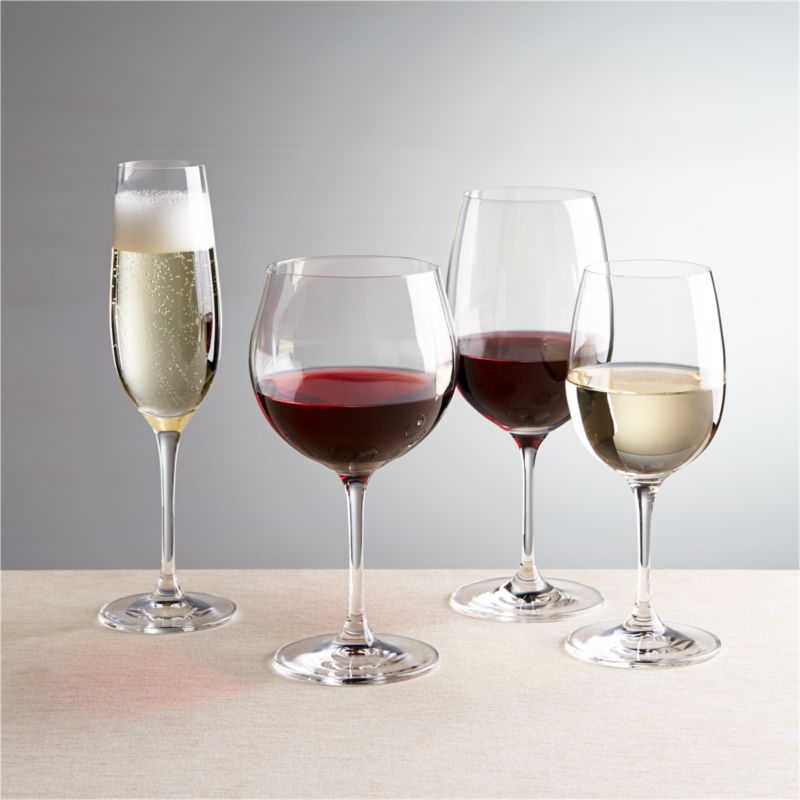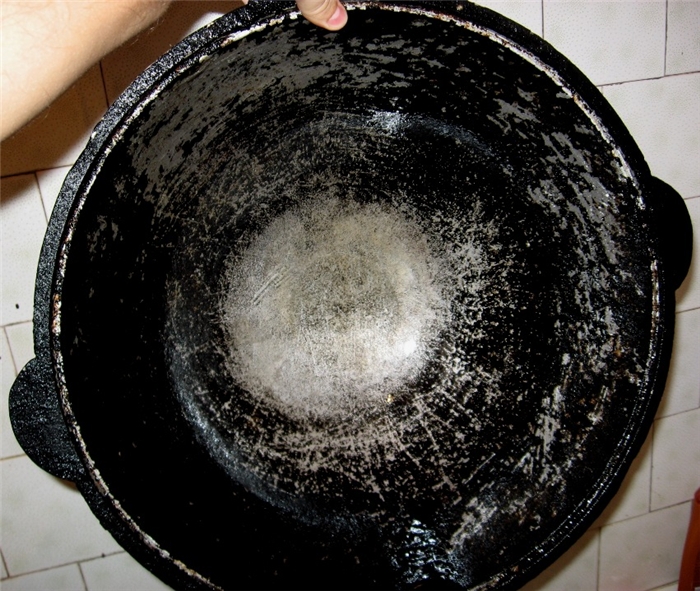How to heat a frying pan
Don’t rush into battle and cook your favorite dish in a newly acquired frying pan. Before the first use, it must not only be washed with the product, but also properly calcined. Each material has its own preparation methods. For example, cast iron is calcined with vegetable oil or table salt, but for cookware with a non-stick coating, the preparation is much more delicate, with a small amount of oil.
The content of the article
How to prepare a frying pan for first use
Bringing home new utensils and rejoicing at the purchase, women are often disappointed after reading the inscription on the label about the need for preparation before first use. There is enough information around, but more often it is scattered and incomplete in one source. We will tell you how to heat pans made of different materials so that there are no problems when cooking.
First of all, any dishes must be cleaned of labels, stickers and washed with soap. And do it manually, without using a dishwasher.
Preparatory stage
After rinsing, wipe the pan dry. This is important so as not to leave unsightly, ingrained streaks, which will then spoil the appearance and quality of cooking.
The first thermal use allows you to identify the shortcomings of the cookware. Unnoticeable chips and cracks will clearly appear during initial use.Don't ignore the problem. If a defect is found, return the frying pan to the store.
Calcination of cast iron cookware
This material most of all needs high-quality preparation before cooking. Whether it’s a small pancake frying pan or a huge wok, they need to be thoroughly heated. In the future, this will help the food not to burn and the housewife will receive delicious, rich dishes.
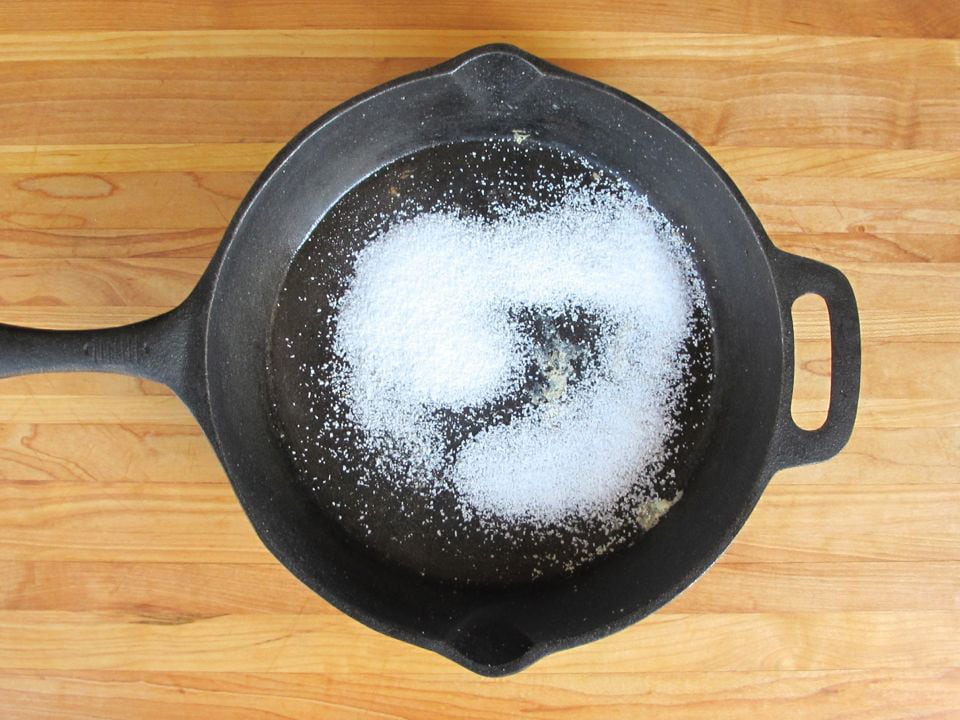
So, after the purchase we proceed according to the following scheme:
- We remove the labels and rinse thoroughly, removing the greasy film that is applied to protect against oxidation.
- Dry with a towel and heat over low heat. This removes moisture from the pores of the cast iron.
- Add coarse table salt. The thickness of the layer at the bottom should be approximately 1–1.5 mm.
- Place on the stove, turning on maximum heat.
- Stir the salt, avoiding burning, for 10–15 minutes.
- Remove from the burner and cool naturally.
After calcination, the dishes are washed again with warm water and soapy water.
It is important to avoid exposure to harsh abrasives and aggressive chemicals. They can ruin the material of the dishes.
You can use vegetable oil for calcination. It is poured into the pan to about 2/3 of the height of the sides. Place on maximum heat and heat thoroughly. Then turn down the flame and keep it on for another half hour. Then it is drained and the cast iron is cooled, wiping it with paper towels.
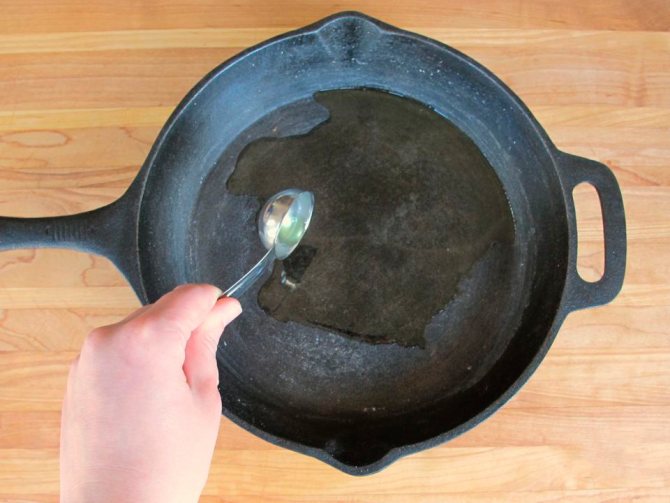
For leisurely preparation, we recommend using the oven. It is heated at medium temperatures. Coat the frying pan with oil on all sides and place it bottom up on a baking sheet. The dishes need to be heated for an hour. Then it is taken out, wiped with paper towels and left for a couple of days. After time has passed, the kitchen utensils are ready for first use.
Steel frying pan
There shouldn't be any problems with stainless steel. It is also washed with dishwashing detergent and wiped dry with a towel. Pour a thin, dense layer of sunflower oil onto the bottom. Place on maximum heat and heat the contents until the first signs of smoking. Then remove the pan from the stove and cool naturally.
The oil is drained, and its remains are rubbed with a paper towel along the walls of the dish. Subsequently, it is washed only if the food is burnt. If the contamination is minimal, it is enough to simply wipe it with a paper towel after cooking. This will help keep the pan working for a long time.
Aluminum cookware
Aluminum is an excellent material for cookware; it is not subject to corrosion and is very light. But pans can oxidize, and food burns badly at high temperatures. That is why it is important to carry out high-quality preparation before first use and observe temperature conditions.
Step-by-step guide to baking an aluminum frying pan:
- Wash the dishes in a warm, soapy solution.
- Pour in water and boil for half an hour.
- Cool in natural conditions, wipe dry.
- Add vegetable oil and heat for 30 minutes over low heat.
- Drain and treat with warm soapy water.
- Leave to dry naturally.
You can cook in such a frying pan after a couple of days, when the oil is well absorbed into the walls of the pan.
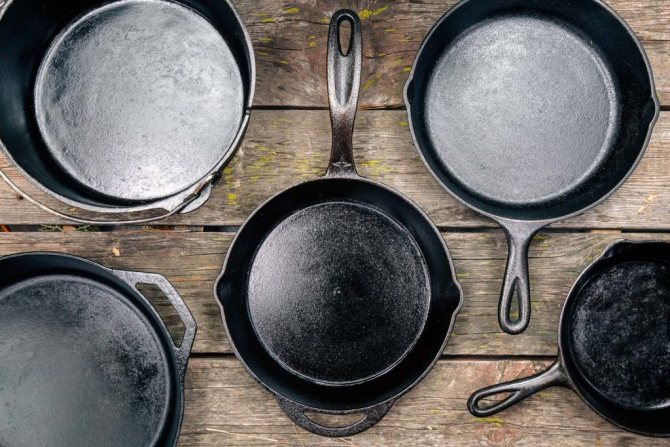
Non-stick appliances
Pans with Teflon, ceramic or diamond coating require careful handling. When cooking, only wooden spoons are used so as not to damage the finely porous structure.
Even with a titanium or granite layer, such dishes cannot be calcined!
The preparatory stage of such utensils is minimal in its efforts. Remove the labels and wash with soapy water. Dry with a paper towel and wipe the bottom and walls with a cotton pad soaked in sunflower oil. Please note that you will have to process the pan once a month so that it lasts longer and the food does not burn.
Why do calcination?
For those who don’t know, the procedure is necessary to create a natural non-stick layer. They use vegetable oil, which fills micropores, invisible to the human eye, on the surface of the dishes.
In addition, during the production process the product is coated with machine oil to protect it from oxidation. Calcination - cleansing dishes from harmful substances.




